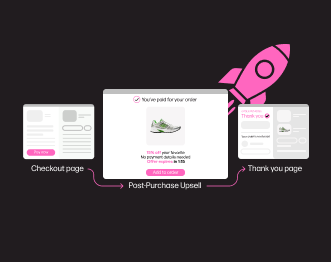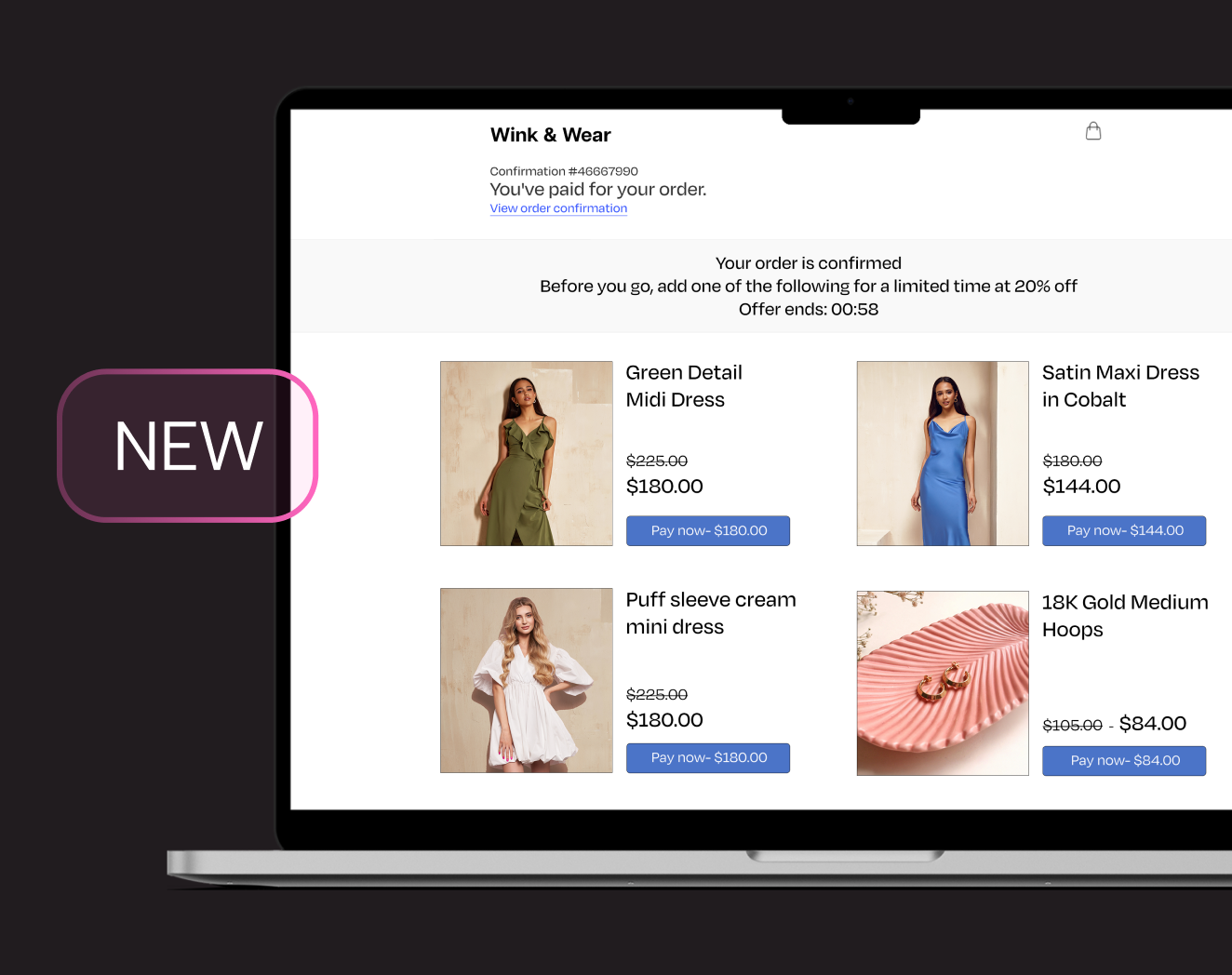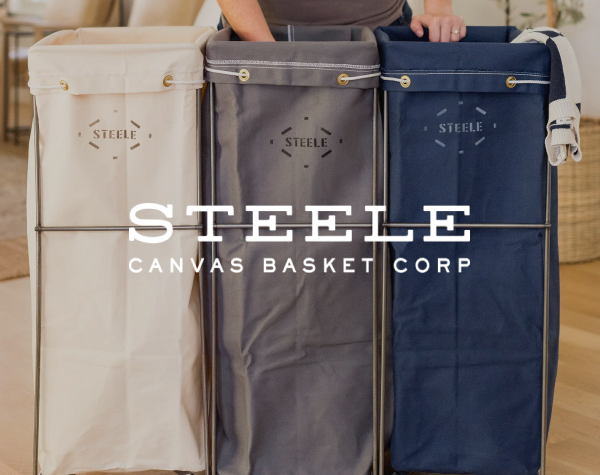Black Friday Marketing Strategies to Maximize 2021 Sales
Recent shifts in consumer behavior have forced many ecommerce retailers to rethink their strategies – and Black Friday weekend is no exception. How can retailers prepare for the potential surge (or dip) in Black Friday performance?
To help retailers everywhere prepare for the holiday months, we’ve put together a quick guide of Black Friday marketing strategies to strengthen customer engagement, conversion rate, average order value and more.
1. Load Test Your Website
One of the first rules of business (and in life) is to always expect the unexpected. While having enough traffic come to your site that it causes it to crash may sound like an unachieveable (and almost enviable) problem to some, a critical part of a successful Black Friday marketing strategy is to prepare for a potential surge in traffic.
To do this, contact your web hosting provider to discuss the traffic limitations of your store. While many servers should be able to handle increased traffic sustainably without upgrading, be sure to analyze the data from previous years to prepare for the worst case scenario.
If you do need to upgrade, then check how long it will take to be up and running as there is no point if it won’t be in place for when you need it. You can check your page speed using the free Google tool PageSpeed Insights; simply enter your site URL to check how your website stacks up.
The truth is your site doesn’t even have to completely fail for you to be left with frustrated and abandoning shoppers.
2. Prepare with Pop-ups
There are always going to be shoppers who won’t be wooed as easily and will possibly want to leave your site empty-handed. Exit intent technology allows you the chance to win back their affections before they go, with the use of pop-ups.
There are two predominant challenges you face during Black Friday and Cyber Monday:
- First of all, customers leaving without making a purchase.
- Secondly, the often transient value of visitors to your site on that day.
But, luckily for merchants, pop-ups can be used to help with both of these issues. Keep shoppers on their way to the check out by using pop-ups, triggered when someone goes to leave your site, to offer them sweet Black Friday deals, offers and even a free gift that will seal the deal.
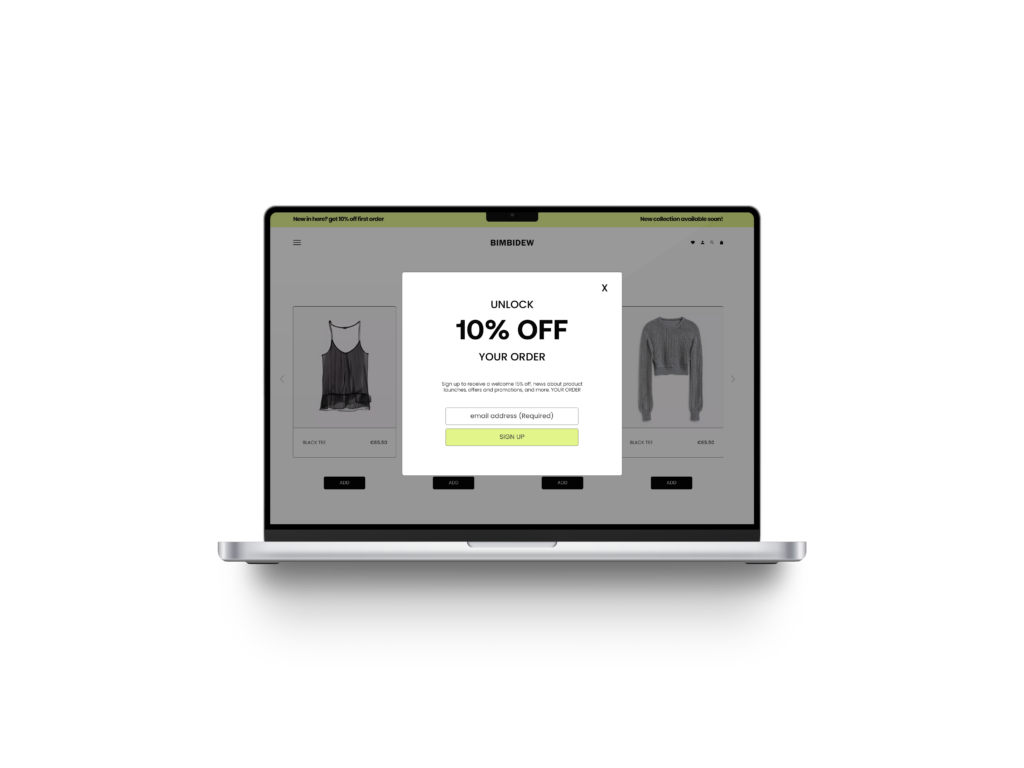
Discount code or free shipping
Whether that be a discount code for extra savings or free shipping, displaying a Black Friday offer in a pop-up helps maximize the return you get from the traffic going to your store that day. Increase the effectiveness of this by adding a time-limit to the discount you offer – not only does this create a sense of urgency but is a technique that particularly lends itself to the fleeting nature of the sale season.
During Black Friday, abandoned cart rates tend to soar even higher than usual with people comparing deals on multiple sites. Since typically a large percentage of these visitors are first timers, when they leave there’s practically no way you can get back in touch with them, which amounts to a huge number of wasted opportunities. That’s why it’s a great idea to use either banner space or a pop-up to encourage visitors to leave their email addresses.
What’s in an ideal pop-up strategy?
Some of the top ways to leverage pop-ups on your ecommerce site include:
- Greeting new customers and collect valuable email addresses
- Generating a sense of urgency to boost season sales
- Making the most of flash sales to increase engagement
- Offering a discount based on cart value for increased AOV
- Offering complementary items for increased cart size
- Targeting the most likely buyers for increased conversion
- Converting visitors before they leave
- Offering a cart contents reminder
- Making the most of PPC campaigns for increased ROAS
Like this strategy? Check out 9 awesome use cases of ecommerce pop-ups.
3. Send Personalized Black Friday Advertising Emails
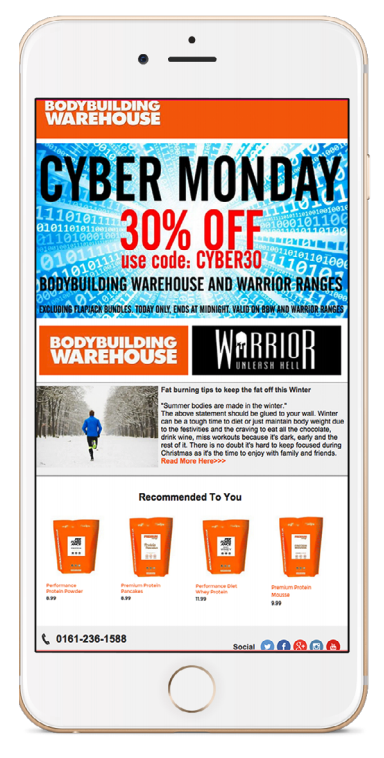
Set up email marketing campaigns targeting those people who visited your store during Black Friday, using the insight you collected to add relevant product recommendations that encourage engagement and a potential purchase.
Compared to a general newsletter with no personalized elements, we’ve seen personalized emails yield an average 20% in conversion rate, encouraging your visitors to come back and get the Christmas present or the Valentine’s Day gift for their loved one – this time for full price – from your store.
Promoting items that are most popular in your store
While promoting your most popular products is a standard part of your overall product recommendation strategy, dates such as Black Friday and Cyber Monday are particularly suited to driving traffic to these products.
Why? Because mass buying behavior of this type is often driven by the desire to “keep up with the Joneses” – people will compare what they bought and the bargains they got.
This means they want to know what everyone is lusting after, so they too can get it – but for a fraction of the price. By highlighting the most popular products in your store you not only play on this but also subtly introduce the concept of scarcity. If the item they want is featured in your trending list, then they know other people want it and it implies that it could soon sell out, motivating them to move now.
4. Display Your Black Friday Deals and Discounts
Let’s face it: During the sale period (and in the current ecommerce climate in general) customers expect a great deal on your inventory without having to actively search out the discounts.
It goes without saying that every part of your website should have discounted items and that these should be pushed to the forefront – but what’s the best way to display them?
One way to beef up your Black Friday marketing campaign is to drive the discount home: amend your styling to include the crossed-out full price or even show the exact percentage that would be saved. It sounds simple, but really emphasizing the potential discount will motivate shoppers that are unsure.
Tectake displays a Black Friday timer alongside a varying product recommendation on the header banner:
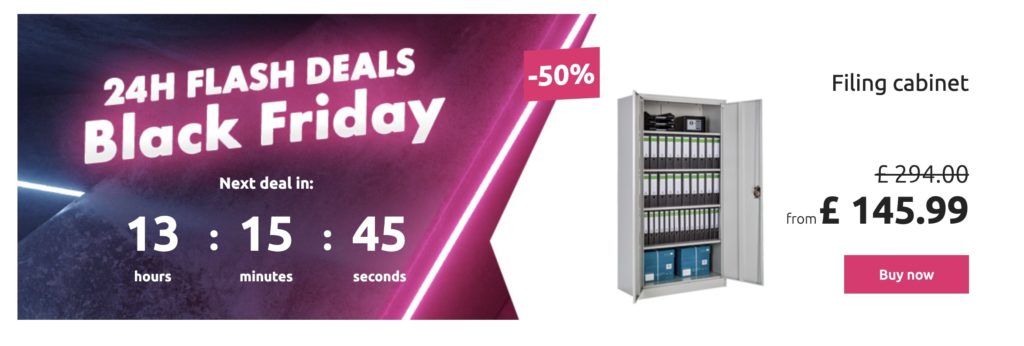
Bonus tip:
Use “show only discounted” filters on recommendation elements to further give the impression that everything is on sale. Even better, break them down by the biggest savings leaving people with the firm impression that you are the go-to for big Black Friday discounts.
5.Use Urgent Messaging and Social Proof to Increase Conversion
Social proof and urgency messaging (known as ‘FOMO’ messaging to some) is commonplace in ecommerce nowadays – and like it or not, it’s here to stay.
Why? For starters, consumers trust the buying decisions of other shoppers more than their own. Also, nothing motivates a hesitant shopper more than an urgent nudge that may cause them to miss out on a potentially awesome purchase (as the old saying goes – you don’t know what you have until it’s gone).
There are a few easy, yet effective, ways to leverage social proof and urgency messaging in your Black Friday marketing strategy to steer your customers to checkout. Let’s look at some of the most effective tactics.
Display how many other customers have viewed a certain product on a given day:
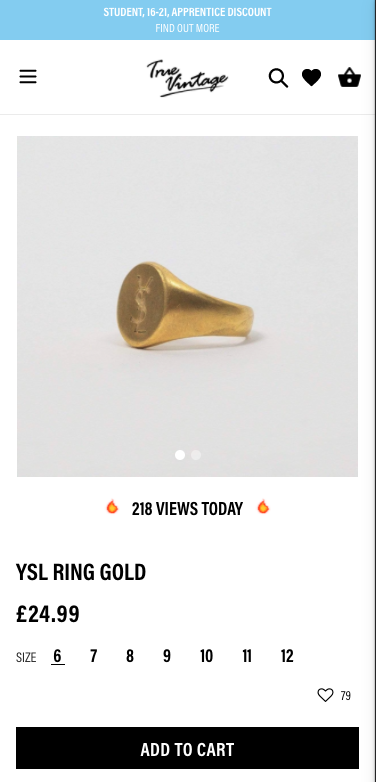
Expose stock levels to communicate product scarcity (you can do this alongside a ‘low stock’ or ‘selling fast’ message to drive the urgency home):
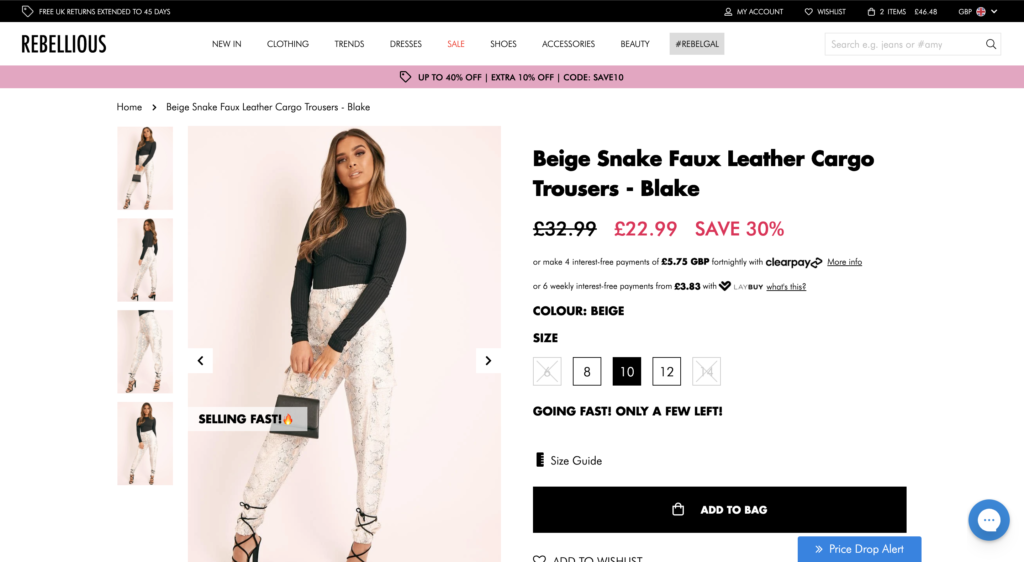
Bonus tip when leveraging product scarcity: you can even combine this information with flexible payment methods or discounts to further incentive the shopper to convert.
6. Welcome Returning Customers with Related Recommendations
Assuming we’ve done at least something right, some of the Black Friday visitors will become return customers either during Christmas shopping or perhaps during the New Year.
This is an amazing opportunity to delight these guests by welcoming them back with product suggestions specifically tailored to their interests.
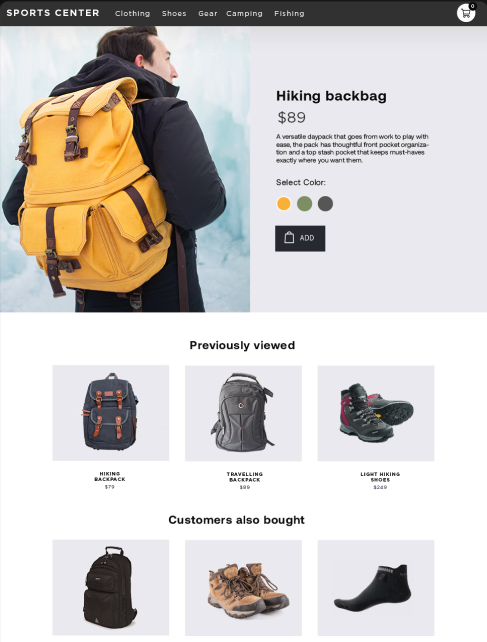
To offer this on your site, analyze the behavior of their last visit(s), matching that with other similar behavioral patterns and uncovering interesting items that the person hasn’t seen yet.
It may sound arduous, but this is a key step in a successful product recommendation strategy and can (and should) be automated, allowing you to impress shoppers and convert them into life-long customers, all without adding to your workload.
This is just the tip of the personalization iceberg: Check out some of our top ecommerce personalization examples to drive the business results you desire.
7. Get Your Store Mobile Ready
The mobile experience has shown steady growth over the years, with past Black Friday statistics showing an increasing affinity for “on the go” browsing and purchases.
It is particularly important to get on Google’s good side (especially during Black Friday weekend) as they penalize those sites who they don’t deem mobile-friendly. And while being top of their search results should always be your aim, being pushed down during the busy sales season could cost you greatly.
Google’s mobile friendly test makes it easy to do a quick once-over of your site and identify any pain points that need optimizing. All you have to do to check is insert your URL and they analyze the rest.
8. Highlight Your Returns Policy
A poor returns policy is one of the biggest barriers to purchase, and on these sale days (if not always) a clear returns policy is a make-or-break in your holiday marketing strategy.
If you have a fantastic returns policy, highlight it everywhere you can. During Black Friday and Cyber Monday, people are buying in a hurry, the sales cycles are substantially shortened and they don’t have the time they usually do to research.
Your job is to make them feel comfortable making a snap decision- and it is your returns policy that will do this. If there is transparency (somewhere on product pages or during the checkout process) allowing a customer to fully understand the terms under which they buy a product, then they are more likely to proceed with the transaction.
In your Black Friday/Cyber Monday strategy, consider not only the language you use in your policy (jargon is nobody’s friend) but also where on the page it is placed.
9. Retarget, Retarget, Retarget
Black friday shoppers have incredibly short attention spans and will compare deals across multiple vendors and price comparison sites.
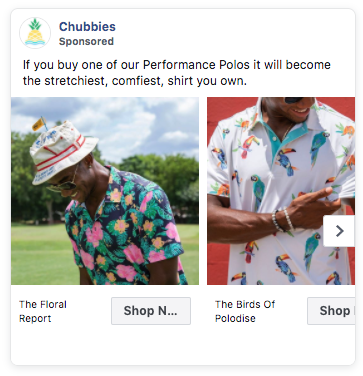
The good news?
Someone leaving your site doesn’t mean your chances to woo them are over. Give them ample opportunity to conclude their purchase by retargeting through email, Facebook and display advertising.
But remember:
This is a one day deal so adjust your retargeting cycle accordingly, using the the lowest time frame possible.
It may go against your (hopefully) normal best practice of not bombarding people but this is Black Friday! Shoppers expect it to be chaotic and the competition is fierce- only the brave and the bold will win.
Take abandoned cart emails for example, where normally you may wait a few hours or a few days to remind abandoned cart owners of the goods they were about to buy on Black Friday lower this to five minutes to avoid them going elsewhere.
Want to try this strategy? – Learn how to create the best abandoned cart emails to woo back undecisive shoppers.
Dive Deeper into Advanced Black Friday Marketing Strategies Available for Your Ecommerce Store
While this Black Friday strategy guide is certainly a strong starting point, the truth is that there’s a lot to be done to truly prepare for the holiday shopping season.
During the first half of 2020, consumers have already shown a shift in the way they interact with brands – from the brands they choose to shop from to the volume they’re purchasing while the world continues to transition to a “new normal”. This is why the time is now for online retailers to explore every possible strategy to maximize performance.
Nosto’s “Christmas in July” roundup of resources features two weeks’ worth of effective tips and tricks for onsite optimization to make your online store a success this year.


